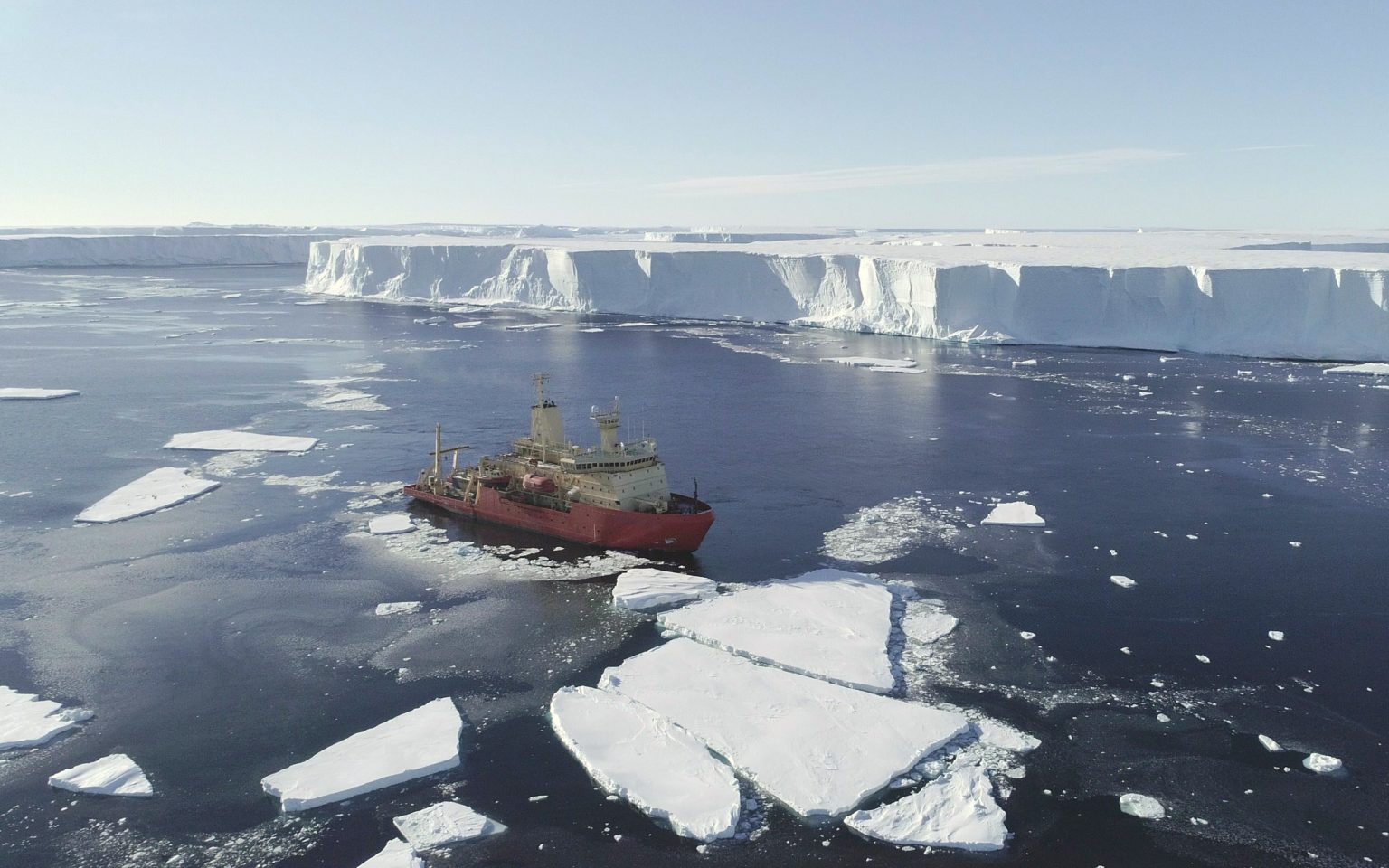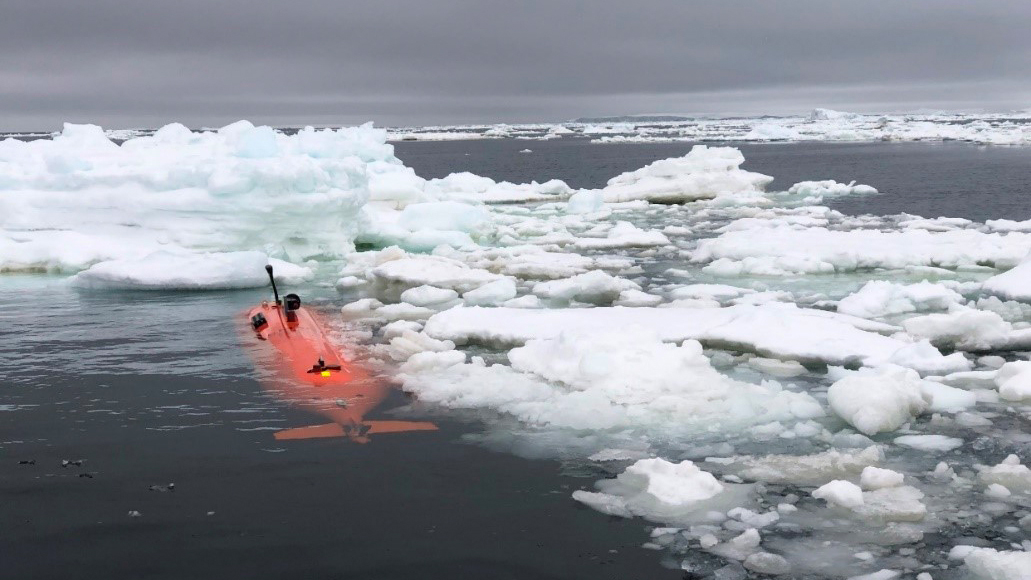Antarctica's 'Doomsday Glacier' close to tipping point, unmanned sub reveals
The glacier could be melting at the key points anchoring it to the land.

A robotic submarine has returned from the dark underbelly of one of Antarctica's largest glaciers with chilling news — it could be melting faster than we previously thought.
Thwaites Glacier, a gigantic ice shelf in West Antarctica, has been on climate scientists' radars for two decades now. But they didn't know just how fast the glacier was melting, and how close it was to complete collapse, until researchers sent an unmanned submarine below the ice shelf.
The first measurements ever performed in the dark waters under the 74,000 square mile (192,000 square kilometers) chunk of ice revealed a disquieting piece of information: A previously underestimated current of warm water is flowing from the east, whittling away at several vital "pinning points" that anchor the shelf to the land.
Related: Time-lapse images of retreating glaciers
"Our observations show warm water impinging from all sides on pinning points critical to ice-shelf stability, a scenario that may lead to unpinning and retreat," the study authors wrote in the paper, which was published April 9 in the journal Scientific Advances. In other words, the entire ice-shelf could get detached and then flow into the ocean.
As one of Antarctica's fastest melting glaciers, Thwaites Glacier, cheerfully nicknamed the "Doomsday Glacier," has lost an estimated 595 billion tons (540 billion metric tons) of ice since the 1980s, contributing to a 4% rise in global sea levels since that time. The glacier acts like a cork in a wine bottle, stopping the rest of the ice in the region from flowing into the sea, so Thwaites Glacier's collapse could potentially take the rest of the West Antarctic Ice Sheet with it, causing a 10-foot (3 meter) rise in global sea levels.
"The worry is that this water is coming into direct contact with the underside of the ice shelf at the point where the ice tongue and shallow seafloor meet," study co-author Alastair Graham, associate professor of geological oceanography at the University of South Florida, told Gizmodo.
Get the world’s most fascinating discoveries delivered straight to your inbox.
That's terrible news for the glacier.
"This is the last stronghold for Thwaites and once it unpins from the sea bed at its very front, there is nothing else for the ice shelf to hold onto. That warm water is also likely mixing in and around the grounding line, deep into the cavity, and that means the glacier is also being attacked at its feet where it is resting on solid rock," Graham told Gizmodo.
Located more than 1,000 miles (1,600 kilometers) away from the nearest research base, Thwaites is remote even by Antarctic standards. Scientists have previously tested temperatures around its edges, and even dropped a torpedo-shape robot through a 2,300-foot-deep (700 m) hole in the ice, but this study marks the first time a submarine has entered the cavity below the shelf. The craft, named Ran after the Norse goddess of the sea, measured the strength, temperature, oxygen content and salinity of the ocean currents flowing beneath the glacier.
Sonar on the ship also enabled high-resolution ocean mapping of the cavity floor, helping scientists to visualize the paths that currents take in and out. They spotted three main inflows of water. One, a deepwater flow from the east, was once assumed to be blocked by an underwater ridge, but the Ran data shows that the current is making its way into the bay. This means that currents are flowing into the glacier from both sides, possibly eroding it at its main anchoring point, located to the north.
Just how much melting is going on isn't clear, but the researchers predict that just one of the currents alone is capable of reducing the ice at a rate of more than 85 gigatons per year.
The findings aren't the only troubling recent news to come from West Antarctica. Exposure to warmer water could also push Thwaites' neighboring Pine Island Glacier past a tipping point, researchers showed in a study published March 25 in the Journal The Cryosphere. The Thwaites and Pine Island glaciers are currently responsible for 10% of the ongoing increase in global sea levels, according to the Cryosphere study.
"The good news is that we are now, for the first time, collecting data that is necessary to model the dynamics of Thwaites glacier," study lead author Anna Wåhlin, professor of oceanography at the University of Gothenburg in Sweden, said in a statement. "This data will help us better calculate ice melting in the future. With the help of new technology, we can improve the models and reduce the great uncertainty that now prevails around global sea level variations."
Originally published on Live Science.

Ben Turner is a U.K. based writer and editor at Live Science. He covers physics and astronomy, tech and climate change. He graduated from University College London with a degree in particle physics before training as a journalist. When he's not writing, Ben enjoys reading literature, playing the guitar and embarrassing himself with chess.
 Live Science Plus
Live Science Plus






